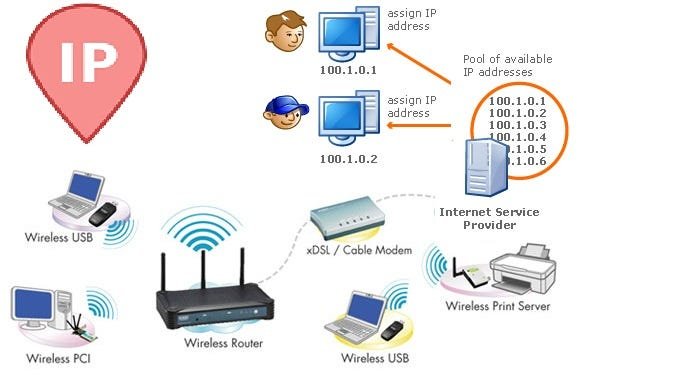158.63.258.200 Every device connected to the internet or a local network is assigned a unique identifier known as an IP address. Think of it like a mailing address for your computer, phone, or server—it tells data packets where to go and how to get back. Without IP addresses, the internet simply wouldn’t work. But sometimes, we run into confusing or incorrect IP addresses, like 158.63.258.200, which appears valid at first glance but is actually not usable. Why? Let’s break it all down.
2. What Is an IP Address?
An IP (Internet Protocol) address is a numerical label assigned to devices participating in a network. It serves two primary functions:
-
Identifying the host or network interface
-
Providing the location of the device
There are two main types:
-
IPv4 (most common): 32-bit format, e.g.,
192.168.0.1 -
IPv6: 128-bit format, e.g.,
2001:0db8:85a3:0000:0000:8a2e:0370:7334
This article focuses on IPv4, which consists of four sets of numbers separated by periods.
3. Anatomy of a Valid IPv4 Address
An IPv4 address looks like this: XXX.XXX.XXX.XXX
Each segment (called an octet) must be:
-
A number from 0 to 255
-
Represented in decimal form
-
No letters, symbols, or numbers greater than 255
So, a valid address might be:
-
192.168.1.1 -
10.0.0.254 -
158.63.128.200
However, an address like 158.63.258.200 is invalid due to the third octet (258) being outside the allowed range.
4. Why 158.63.258.200 Is Invalid
Let’s look at 158.63.258.200 in more detail:
-
158 – valid
-
63 – valid
-
258 – INVALID (must be 0–255)
-
200 – valid
The mistake here is technical but common. A user may mistype or misinterpret the number, especially when manually configuring devices or copying information from unreliable sources.
5. What Happens If You Use an Invalid IP Address?
Using an invalid IP like 158.63.258.200 can lead to:
-
Connectivity failures: Devices won’t connect to the network.
-
Router errors: Your router may reject the configuration.
-
Software issues: Applications relying on IP addresses (like remote desktop tools) will not function.
-
DNS errors: If the IP is tied to a domain, it won’t resolve properly.
6. How to Check if an IP Address Is Valid
To verify an IP address:
-
Use the Command Prompt (Windows):
This will fail for invalid addresses.
-
Use IP validation tools online:
-
whatismyipaddress.com
-
ipvoid.com
-
-
Use regular expressions in programming to validate:
7. Where IP Addresses Are Used
Some of the common uses of IP addresses include:
-
Web browsing: Every website is hosted on a server with an IP.
-
Home networks: Your router assigns internal IPs like
192.168.0.1. -
Remote access: Tools like SSH or RDP use IPs to connect devices.
-
Gaming: Multiplayer servers rely on public IPs.
-
IoT: Smart devices like lights and cameras need valid IPs.
8. Types of IP Addresses
There are several categories of IP addresses, including:
Public IPs
-
Assigned by your ISP
-
Reachable from the internet
-
Example:
158.63.128.200(if valid)
Private IPs
-
Used within home/office networks
-
Not accessible from outside unless configured
-
Ranges include:
-
10.0.0.0 – 10.255.255.255 -
172.16.0.0 – 172.31.255.255 -
192.168.0.0 – 192.168.255.255
-
Static vs. Dynamic
-
Static IP: Manually assigned and doesn’t change
-
Dynamic IP: Assigned by DHCP and may change over time
9. Common IP Configuration Errors
If you’re seeing errors related to IP addresses, they might stem from:
-
Typos: Mistyped addresses like
158.63.258.200 -
Conflict: Two devices using the same static IP
-
Subnet mismatch: IPs not matching subnet masks
-
Gateway error: Incorrect default gateway
10. How to Assign a Valid IP Address
To configure a device with a static IP:
-
Go to Network Settings
-
Choose Static or Manual
-
Enter:
-
A valid IP: e.g.,
192.168.1.50 -
Subnet Mask: usually
255.255.255.0 -
Gateway: typically your router (e.g.,
192.168.1.1) -
DNS Server: e.g.,
8.8.8.8
-
Avoid using:
-
Numbers >255
-
Reserved IPs (like 127.0.0.1)
11. Reserved and Special IP Addresses
Some IPs are not usable for general networking. These include:
| IP Address | Purpose |
|---|---|
| 127.0.0.1 | Loopback (localhost) |
| 255.255.255.255 | Broadcast address |
| 0.0.0.0 | Default, unknown address |
| 169.254.x.x | APIPA (auto-assigned when DHCP fails) |
12. Tools to Help Manage IP Addresses
Here are some tools and tips to manage and troubleshoot IP issues:
-
Advanced IP Scanner (free tool to scan your network)
-
Angry IP Scanner (quick and simple)
-
IPConfig / IFConfig (built-in OS commands to check IP info)
-
DHCP servers (automatically assign correct IPs)
13. Fixing IP Errors in Windows
If your system tries to use an invalid IP or can’t connect:
-
Open Command Prompt as Admin
-
Run:
-
This forces the system to get a new IP via DHCP
You can also reset TCP/IP stack:
14. Why Invalid IPs Get Shared
Sometimes, addresses like 158.63.258.200 get shared due to:
-
Typos in documentation
-
Placeholder IPs for teaching or examples
-
Misconfigured DNS records
-
Malware or spoofed addresses in logs
Always validate IPs before using them in configuration or networking tasks.
15. Conclusion: Get IP Smart
Understanding IP addresses is fundamental to using and managing networks effectively. Whether you’re a casual user setting up a printer or a sysadmin managing a datacenter, knowing the difference between valid and invalid IPs—like 158.63.258.200—can save hours of frustration. Always verify your inputs, use proper tools, and stay within the correct ranges. The digital world runs on IPs—make sure yours are on point.
